Filter by

Artificial Intelligence
This book begins with the past and present of the subversive technology of artificial intelligence, clearly analyzes the overall picture, latest developments and development trends of the artificial intelligence industry, and conducts in-depth research on the competitive situation of various countries. The book also provides an in-depth analysis of the opportunities and challenges that artifici…
- Edition
- 1
- ISBN/ISSN
- 978-981-15-6548-9
- Collation
- -
- Series Title
- -
- Call Number
- XXI, 322
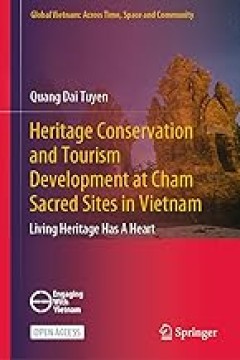
Heritage Conservation and Tourism Development at Cham Sacred Sites in Vietnam
This open access book considers the growing field of heritage tourism from community perspectives. It explores how the Cham—Vietnam’s large ethnic minority—reconcile their needs for economic development with the boundaries circumscribed by their traditional culture. It examines struggles that local minority stakeholders like the Cham face when trying to participate in areas of development…
- Edition
- -
- ISBN/ISSN
- 978-981-99-3349-5
- Collation
- XIX, 234
- Series Title
- -
- Call Number
- -

Language Practices Among Children and Youth in Indonesia
This open access book presents studies of language use in Indonesia, focusing on children and youth. It reports on developments in the use of language for narrative production and within the realm of popular culture and traditional cultural practices in Indonesia. Through studies that include cohesion in narrative production, language in radio advertising, naming practices and formulaic prohibi…
- Edition
- -
- ISBN/ISSN
- 978-981-99-4774-4
- Collation
- XIII, 198
- Series Title
- -
- Call Number
- -

Fate and Freedom in Korean Historical Films
This open access book examines the depiction of Korean history in recent South Korean historical films. Released over the Hallyu (“Korean Wave”) period starting in the mid-1990s, these films have reflected, shaped, and extended the thriving public discourse over national history. In these works, the balance between fate and freedom—the negotiation between societal constraints and individu…
- Edition
- -
- ISBN/ISSN
- 978-3-031-27267-7
- Collation
- XIX, 255
- Series Title
- -
- Call Number
- -
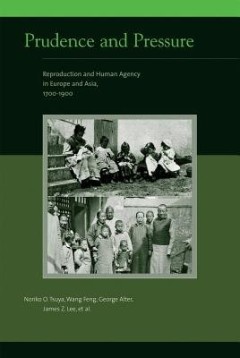
Prudence and Pressure: Reproduction and Human Agency in Europe and Asia, 1700…
A study of human reproduction and social organization in preindustrial communities that reveals important similarities between Europe and Asia.This pioneering study reconceptualizes the impact of social organizations, economic conditions, and human agency on human reproduction in preindustrial communities in Europe and Asia. Unlike previous studies, in which Asia is measured by European standar…
- Edition
- -
- ISBN/ISSN
- 9780262326476
- Collation
- 1 online resource (xxv, 380 pages) :illustrations, maps.
- Series Title
- -
- Call Number
- -
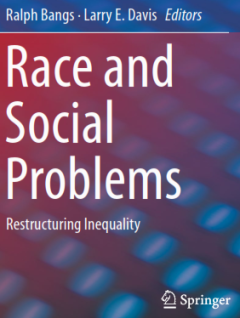
Race and Social Problems; Restructuring Inequality
Meskipun orang Amerika percaya pada janji masyarakat yang egaliter dan tidak memandang warna kulit, kenyataannya jauh dari cita-cita itu. Orang kulit berwarna secara konsisten tertinggal dari rekan-rekan kulit putih mereka dalam bidang-bidang utama kualitas hidup. Meskipun banyak kemajuan yang signifikan, ketidaksetaraan struktural yang meluas terus ada dan berkembang. Ras dan Masalah Sosial me…
- Edition
- -
- ISBN/ISSN
- 978-1-4939-0863-9
- Collation
- -
- Series Title
- -
- Call Number
- 305.8 BAN r
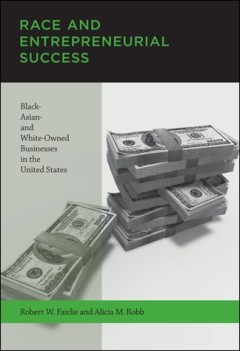
Race and Entrepreneurial Success: Black-, Asian-, and White-Owned Businesses …
A comprehensive analysis of racial disparities and the determinants of entrepreneurial performance--in particular, why Asian-owned businesses on average perform relatively well and why black-owned businesses typically do not.Thirteen million people in the United States--roughly one in ten workers--own a business. And yet rates of business ownership among African Americans are much lower and hav…
- Edition
- -
- ISBN/ISSN
- 9780262272476
- Collation
- 1 online resource (x, 240 pages) :illustrations
- Series Title
- -
- Call Number
- -
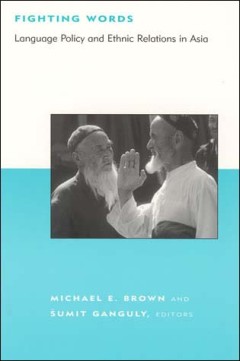
Fighting words :language policy and ethnic relations in Asia
Project sponsored by the BCSIA Studies in International Security in cooperation with the Center for Peace and Security Studies, and the Pacific Basin Research Center.Language policy is a sensitive issue in most countries. In countries where more than one language is spoken--the vast majority--language policies affect the ability of individuals and groups to participate in government, to be trea…
- Edition
- -
- ISBN/ISSN
- 9780262269353
- Collation
- 1 online resource (xi, 480 pages) :maps.
- Series Title
- -
- Call Number
- -
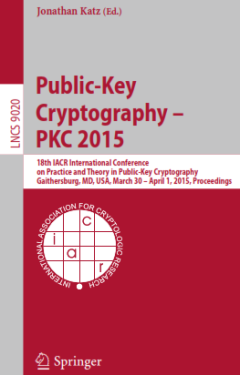
Public-Key Cryptography -- PKC 2015; 18th IACR International Conference on Pr…
Konferensi Internasional IACR tentang Praktik dan Teori Kriptografi Kunci Publik (PKC 2015) ke-18 diadakan dari tanggal 30 Maret hingga 1 April 2015, di Gaithersburg, MD, AS, di kampus Institut Nasional Standar dan Teknologi (NIST) . Disponsori oleh Asosiasi Internasional untuk Penelitian Kriptologi (IACR), konferensi ini berfokus pada semua aspek teknis kriptografi kunci publik. Prosiding ini …
- Edition
- 9020
- ISBN/ISSN
- 978-3-662-46447-2
- Collation
- -
- Series Title
- Security and Cryptology
- Call Number
- 652.8 KAT p

Prospects for monetary cooperation and integration in East Asia
East Asian countries were notably uninterested in regional monetary integration until the late 1990s, when the Asian financial crisis revealed the fragility of the region's exchange rate arrangements and highlighted the need for a stronger regional financial architecture. Since then, the countries of East Asia have begun taking steps to explore monetary and financial cooperation, establishing s…
- Edition
- -
- ISBN/ISSN
- 9780262265980
- Collation
- 1 online resource (xvi, 320 pages) :illustrations
- Series Title
- -
- Call Number
- -
 Computer Science, Information & General Works
Computer Science, Information & General Works  Philosophy & Psychology
Philosophy & Psychology  Religion
Religion  Social Sciences
Social Sciences  Language
Language  Pure Science
Pure Science  Applied Sciences
Applied Sciences  Art & Recreation
Art & Recreation  Literature
Literature  History & Geography
History & Geography